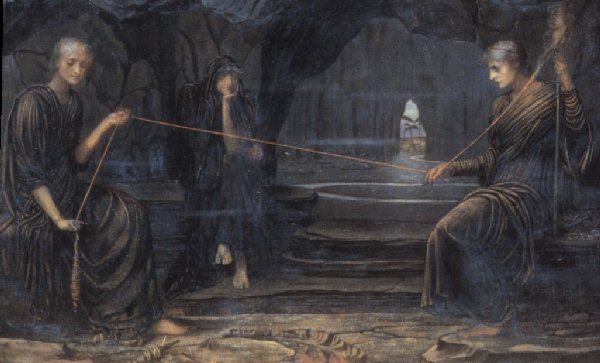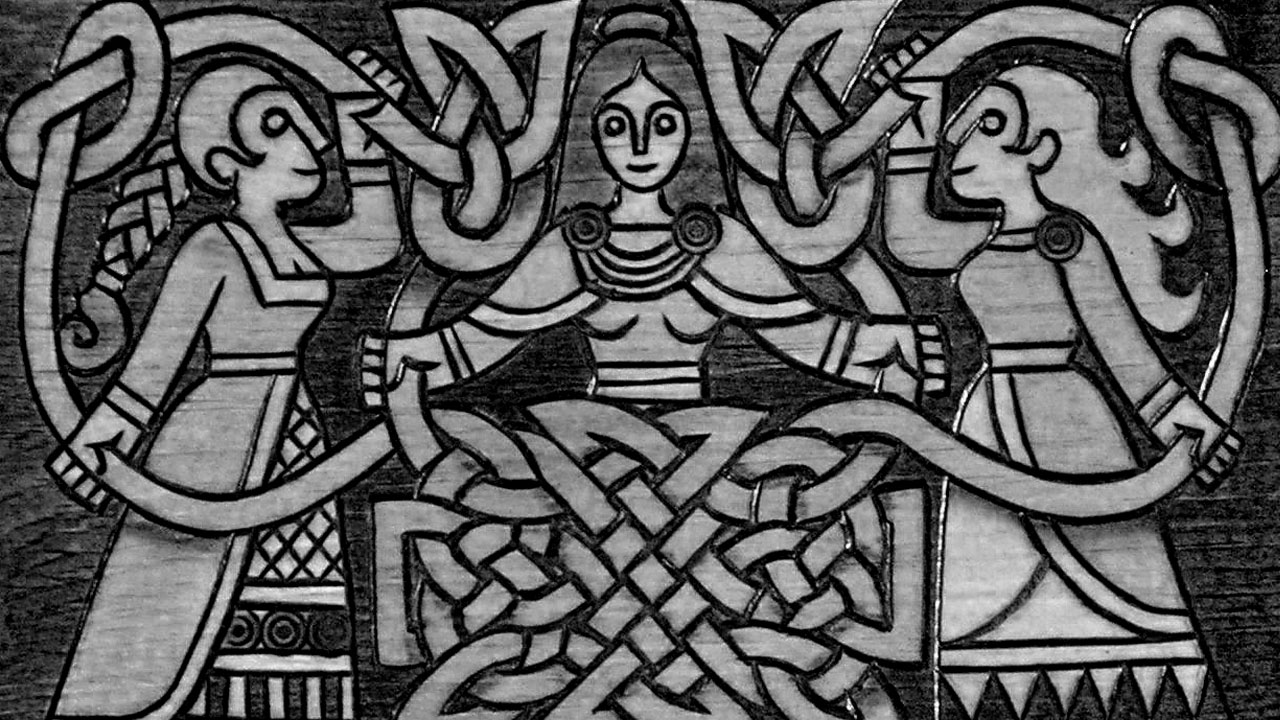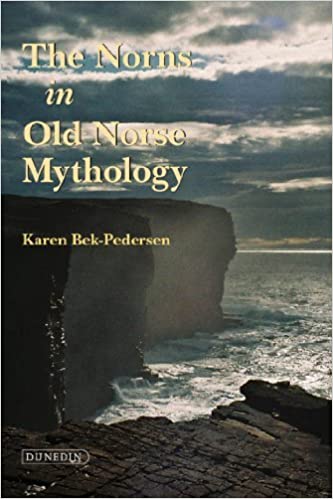The nornir or norns were a group of female supernatural beings closely related to ideas about fate in Old Norse tradition. Karen Bek-Pedersen provides a thorough understanding of the role played by norns and other beings like them in the relevant sources.
Although they are well known, even to people who have only a superficial knowledge of Old Norse mythology, this is the first detailed discussion of the norns to be published amongst the literature dealing with Old Norse beliefs. Surprisingly little has been written specifically about the norns. Although often mentioned in scholarship treating Old Norse culture, the norns are all too often dealt with in overly superficial ways.
The research presented in “The Norns in Old Norse Mythology” goes much deeper in order to properly understand the nature and role of the Norns in the Old Norse world view. The conclusions reached by the author overturn a number of stereotypical conceptions that have long dominated our understanding of these beings.
European mythologies
The book has a natural focus on Old Norse culture and is especially relevant to those interested in or studying Old Norse culture and tradition. However, comparative material from Celtic, Anglo-Saxon and Classical traditions is also employed and the book is therefore of interest also to those with a broader interest in European mythologies.
Karen Bek-Pedersen lectured in Early Scandinavian Studies at the University of Aberdeen until recently where she worked at the Centre for Scandinavian Studies. She has an MA (hons) and PhD from the University of Edinburgh. From 2004–2007 she worked at Scandinavian Studies at the University of Edinburgh, teaching Danish language, Scandinavian Cultural History and Old Norse sagas and mythology. In 2008 she worked at Aarhus Universitet, in Denmark teaching Old Norse: Eddic poetry. She has participated in the Orkney International Science Festival a number of times, giving talks on Old Norse mythology.

Supernatural beings
Old Norse mythology portrays a group of three female supernatural beings called the norns, who act as representatives of the past, present and future, and who spin and weave fate for mankind. That, at least, is what you have probably always thought.
Nothing as mundane as the facts of the matter is likely to quash the stereotypes. This book is here to change your mind. The book aims to provide an understanding of the role played by the norns in the world view current in the Scandinavian cultural area during the Viking Age and early medieval period.
Although the norns are well known to most people who take an interest in Old Norse mythology, there is as yet no in-depth study of them among the literature dealing with Old Norse beliefs. This book sets out to redress that situation. The first point to note is that the beings concerned are called nornir in Old Norse (sg. norn) and that the policy here will be to use the Old Norse terms rather than English approximations.
The rationale is that, although some Old Norse terms have English renditions or approximations (norns, valkyries and fetches for nornir, valkyrjur and fylgjur), this is not the case for all beings that will be discussed below (for example dísir, vanir, ásynjur). The author, karen Bek-Pedersomn, therefore decided to employ the Old Norse terms across the board because the consistency of doing that greatly appeals to her and us the readers.
Nornir
The nornir are intriguing figures in the mythology. Playing predominantly cameo parts, they remain shadowy background figures and most of their appearances consist of brief references to their dealings behind the backs of human beings. We rarely get clear representations of who and what the nornir really are, but we do hear enough about them to understand that they fulfilled a role in people’s conceptual world during the period and area in question — the Scandinavian cultural area roughly between ad 800 and ad 1200, with ‘Scandinavian’ indicating the geographical areas where Old Norse language was dominant during that time. The nornir are rarely visible in person but remain present nonetheless, usually intangible, mostly out of focus and always complex.
Questions
Three questions have been fundamental to the present research in the book:
(1) Why is fate so often represented in feminine guise?
(2) What is the connection between nornir and textile-related work?
(3) What does it mean to regard fate as a kind of law?
These questions have provided a basic structure for the book, but have not been allowed to constrain the research where sources seem to either categorise material differently or indicate contradicting ideas. The questions have also largely been allowed to subdivide the discussions, and the book therefore falls into four main chapters, each dealing with certain aspects of the nornir and the concept of fate in Old Norse tradition.
The book treat subject areas that intertwine in numerous ways and, while an attempt has been made to establish a clear focus for each chapter, the reader will find that there are overlaps between them.
Fate
The role and identity of the nornir are inextricably bound up with the notion of fate and, therefore, a discussion of the nornir must also include a discussion of the concept of fate. However, an answer to the question of what fate means is not all that simple to come by because the concept is cultural, not natural, and as such it is culturally and historically specific and subject to changes over time and through space. In the case of Old Norse tradition, fate or destiny is a widely employed notion that is referred to in many situations, most of which do not involve the nornir directly.
Scholars have most often opted either for brevity or for more inclusive discussions of female supernatural beings in general — and here the circle closes, as this is primarily due to the fact that the nornir are so rarely discussed in their own right.
It is not wrong as such to consider the nornir to be part of a larger group of female supernatural beings and there are several reasons why this way of dealing with them is perfectly acceptable in more general contexts: the nornir are not mentioned as often as other supernatural female figures, there is little evidence of any formal cult attached to them and, shadowy as they are, it is simply difficult to get a clear view of the substance lurking behind the term nornir. Yet it is still possible to reach a deeper understanding of these beings if they are treated as the central subject of investigation — as will become apparent in Karen Bek-Pedersen’s book.
Delve deeper with this excellent read!
https://amzn.to/2OKZGF5
The Morrigan Sisters




